By Victor Caneva
A few weeks ago, our family hired a van and celebrated my wife finishing chemotherapy by spending a week in the Carnic Alps. We left a hot and muggy Trieste and in two hours we found ourselves relishing a cool mountain breeze in Collina di Forni Avoltri.
My ancestors had lived in this picturesque village since at least the year 1601, before my great-grandfather, orphaned at a young age, was taken by his uncle to start a new life in America. Having only visited once since moving to Italy, I savored the chance to learn more about the hamlet and its unique culture. Also, a drastic change of scenery was therapeutic for us after a whole lot of time spent in the apartment over the last six months.
You may already know that I love the idea of traipsing to another country on foot if you read my article about walking from Muggia to Slovenia. Now, almost exactly a month later, I planned on bagging my second pedestrian border crossing by hiking up the Volaia pass to Lago Volaia, a sublime alpine lake that technically lies in Austria.
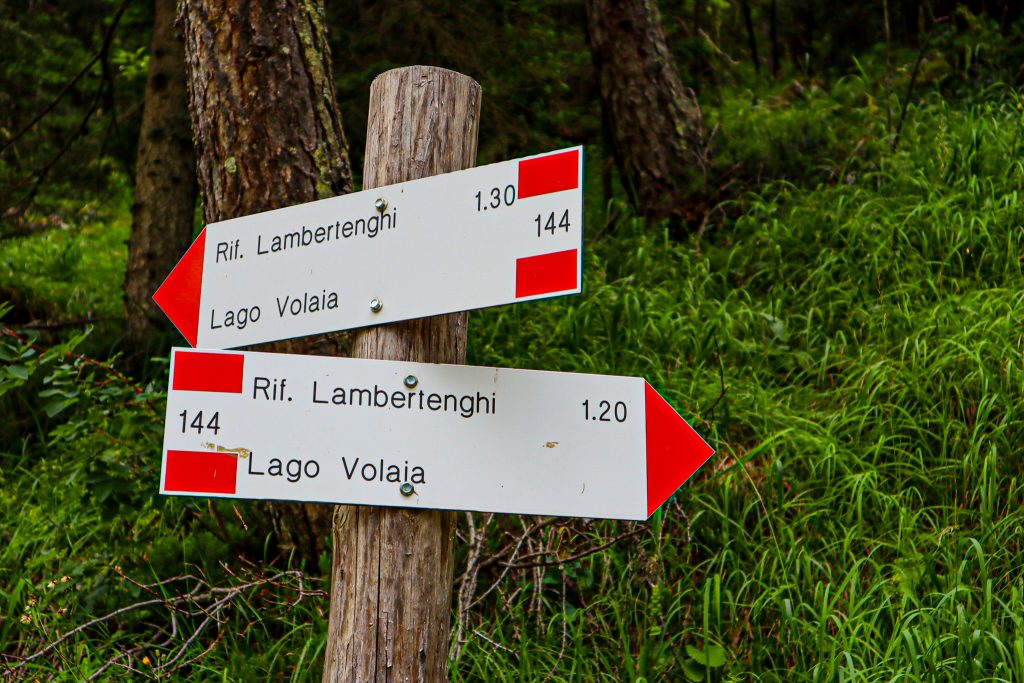
if walking to Austria (a country I had not yet set foot in) wasn’t cool enough already, this particular hike was also drenched with personal significance. I would be taking the same path to Austria that my great-grandfather took as a boy when he smuggled cigarettes across the border over a hundred years ago. My dad came along on this adventure so together we could reconnect with a land that had been such a part of our forebears’ lives and, hopefully, will remain a part of my childrens’ lives.
It was a chilly August morning as we walked out the door of our apartment and made our way down to the historic fountain in the center of town to fill up our bottles. Fresh and cool spring water funnels down to the fount from the mountains above and the locals are proud of the purity of the water. For context, Pierabec, the home of the Goccia di Carnia mineral water headquarters, lies just to the northwest.

We headed east and hopped on the Troi di Corvats, a lovely nature trail leading from the outskirts of Collina to Rifugio Tolazzi, where the trailhead for the Volaia Pass is located. After crossing the Landri River and spotting a dear in the meadow just below the rifugio, we emerged at the parking lot for the mountain oasis.
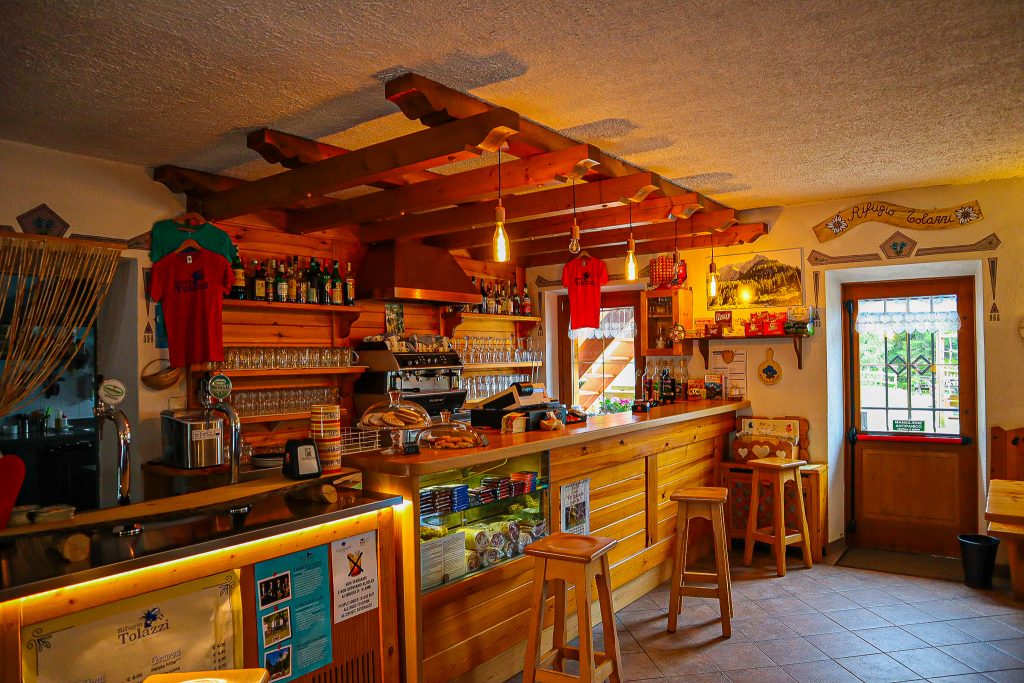
For me, rifugi, or “mountain huts,” many of which function as well appointed restaurants and bars with short term accommodation for trekkers, represent a highly cultured way to enjoy nature. Even at impossible altitudes and on secluded mountain sides, there are rifugi in Italy that offer incredible selections of food and drink so that adventurers don’t have to miss a quality cafe or affettati plate while they explore. Remembering hikes on the Appalachian Trail where I dined on canned vienna sausages and water in a rainy tent, I have since been overwhelmingly won over by the European approach to the outdoors. Still early in the morning, dad and I stopped in to Rifugio Tolazzi for a cappuccino (made with Hausbrandt coffee!) and a little sambuca….you know…for energy.
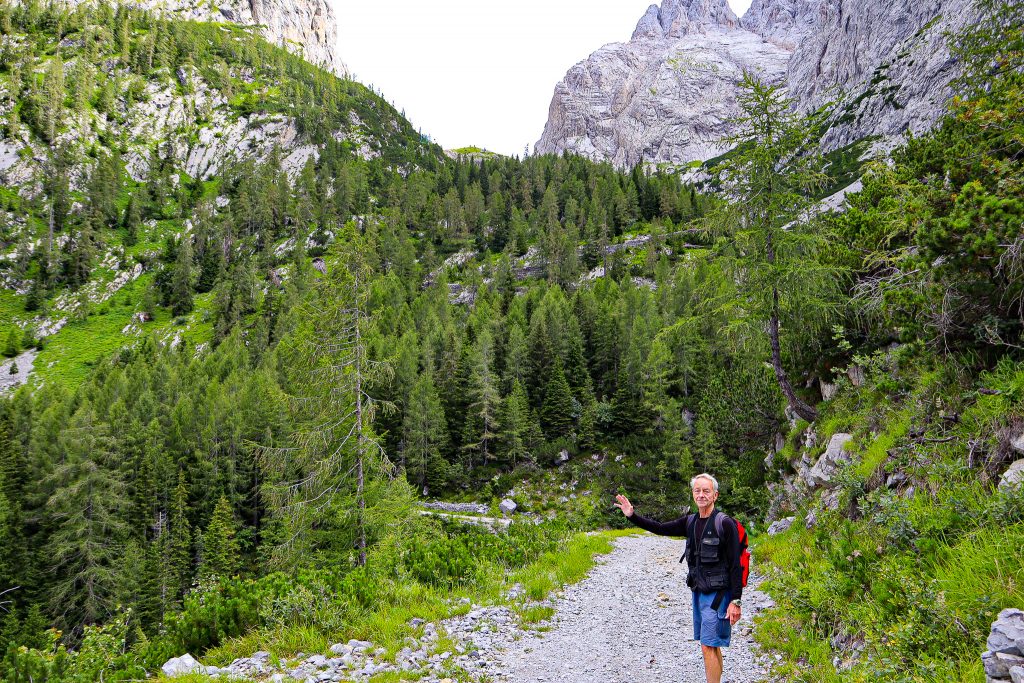
Once we were fueled up, we headed for the trail, walking up the incline behind Rifugio Tolazzi. From here, trails also branch out to the peak of Monte Coglians, to Rifugio Giovanni e Olinto Marinelli (the highest rifugio in Friuli Venezia Giulia), to Malgha Moraretto (an alpine agroturismo), and to other attractions in this corner of Carnia.

We hopped on trail 144 and started climbing. The trail began as a wide path strewn with small rocks and, although we were ascending, the hike was not too arduous. Breaks in the evergreens revealed mesmerizing panoramas of Collina, nestled cozily in the valley below with the jagged Pesarine Alps rising dramatically in the background. Each increasingly lofty viewpoint provided a new angle on this delightfully spiky range as Collina faded further and further away, eventually disappearing behind the imposing slopes of Monte Capolago and Monte Canale.

After a long period of relatively easy progress, the trail narrowed and became more demanding. The pines increasingly gave way to smaller vegetation more suited to the rocky soil and the path now required us to scramble up grey stones, taking care not to twist an ankle. We may not have picked the most beautiful day for our expedition, but the cloudy skies gave a moody, otherworldly atmosphere to the alpine landscape. Breezy and at around 55 degrees fahrenheit (12 degrees celsius or so), the weather kept us comfortable as we exerted ourselves.
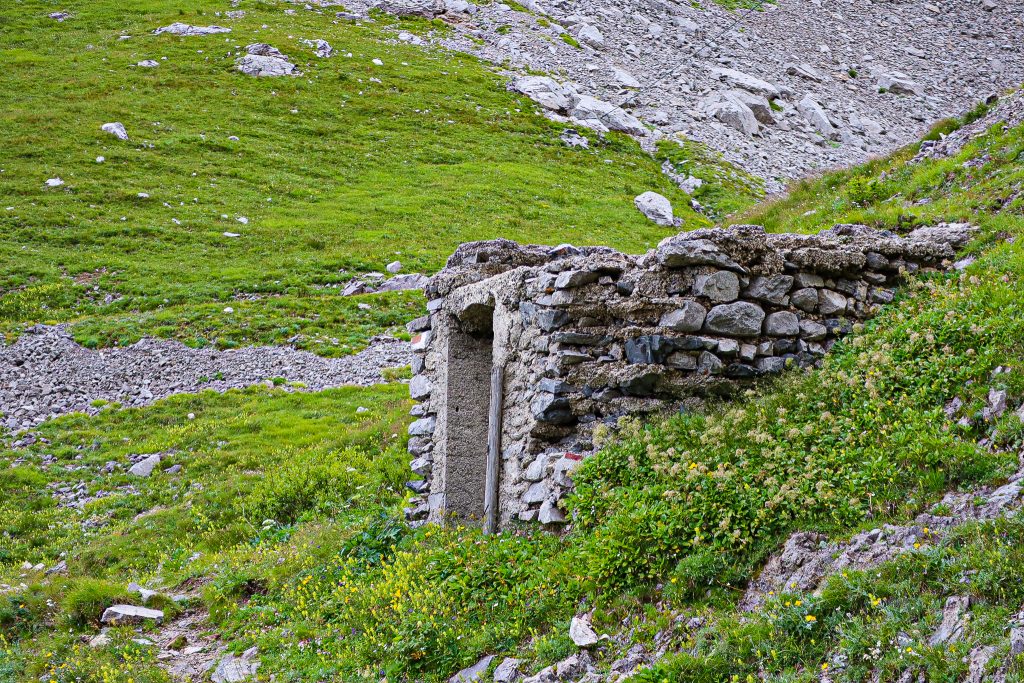
As we approached the Volaia Pass, which leads between the peaks of Monte Coglians and Monte Capolago, the trail began to flatten out. Occasionally, marmots, or as I like to call them, cuddly mountain banshees, broke the silence of the pass, their screechy calls echoing off the rock faces. The trail wound to the left and we spotted the remains of a fortification from the First World War.
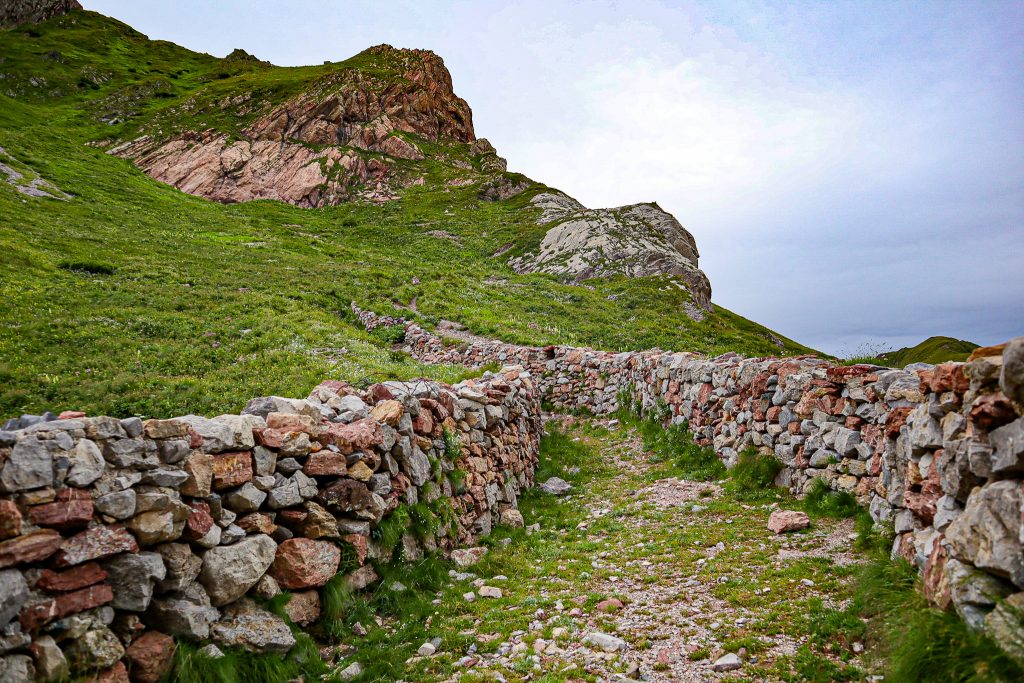
Between May of 1915 and October of 1917, the Italian and Austrian armies fought over this 1977 meter (around 7,000 foot) pathway between nations in harsh, frigid conditions. Austria first seized the pass, but the Italians quickly regained the position, using the help of local mountain guides. Italy held the pass until the Italian Army was routed at the battle of Caporetto in late October, 1917. Soldiers positioned in the pass not only wintered in crude bunkers, but somehow managed to haul weaponry up the 2,780 meter (9,121 foot ) summit of Monte Coglians. A well preserved trench still lies on the Italian side of the pass and makes for a surreal opportunity to walk in the shoes of the soldiers stationed here, who were endangered by avalanches as well as enemy fire.

Soon we spotted the Rifugio Lambertenghi Romanin, a renowned rifugio situated on the Italian side of the border with Austria, which lies only meters away. The establishment derives its name from two Italian lieutenants who fell during the fighting here. Unfortunately, the rifugio was undergoing renovations, so stopping in wasn’t an option, but it was pretty amazing to witness supplies being sent up to the workers via a cableway stretching all the way back down to Rifugio Tolazzi.
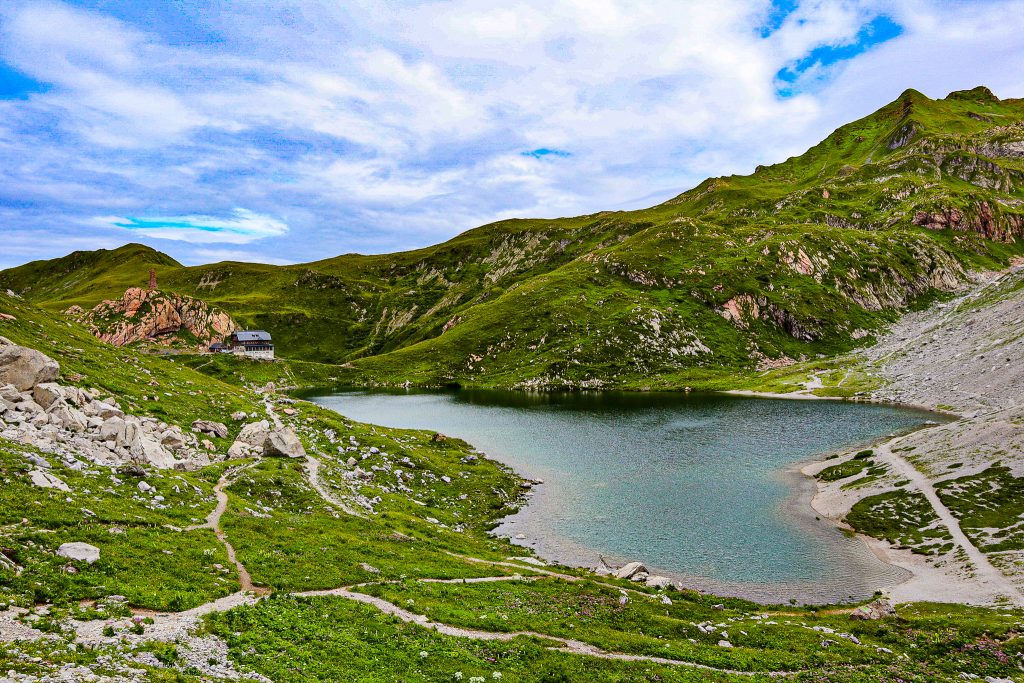
We climbed a few more steps up the slope behind the rifugio and, suddenly, Lago Volaia (Wolayersee in German) and Austria emerged below us. The crystalline lake, surrounded by alpine grasses and myriad of wildflowers, whose embellishments were now beginning to fade in late summer, was striking. The highest of Friulian peaks framed the scene from behind and the basin was bordered by softer, greener slopes further ahead. At the far end of the lake lay a “hutte,” the Austrian version of a rifugio. And this one, the Wolayerseehutte, was open! We walked along the western side of the lake, soaking in the bold tranquility of the lake, whose gentle lines are contrasted by the rugged giants towering above. As we progressed, marvelling at the water’s icy blue hue, which shone through despite the grey skies, we stepped aside to let a mountain biker pass and I received my first ever “danke” in a German speaking nation.

Not counting the workers revamping Rifugio Lambertenghi Romanin, we had only seen three other souls on the trail, allowing us to experience the pass in wild solitude. As we stopped in at the Wolayerseehutte for an early lunch, there were a few other parties sitting outside, but the crowd was light. We ordered bratwurst and kraut, served with mustard and horseradish and enjoyed a beer right on the edge of the lake. The meal was incredibly satisfying, not only because I am a hopeless romantic and I was tasting my first beer and bratwurst in Austria, but also because I had hauled myself up a pass to another country and had earned a hearty splurge.
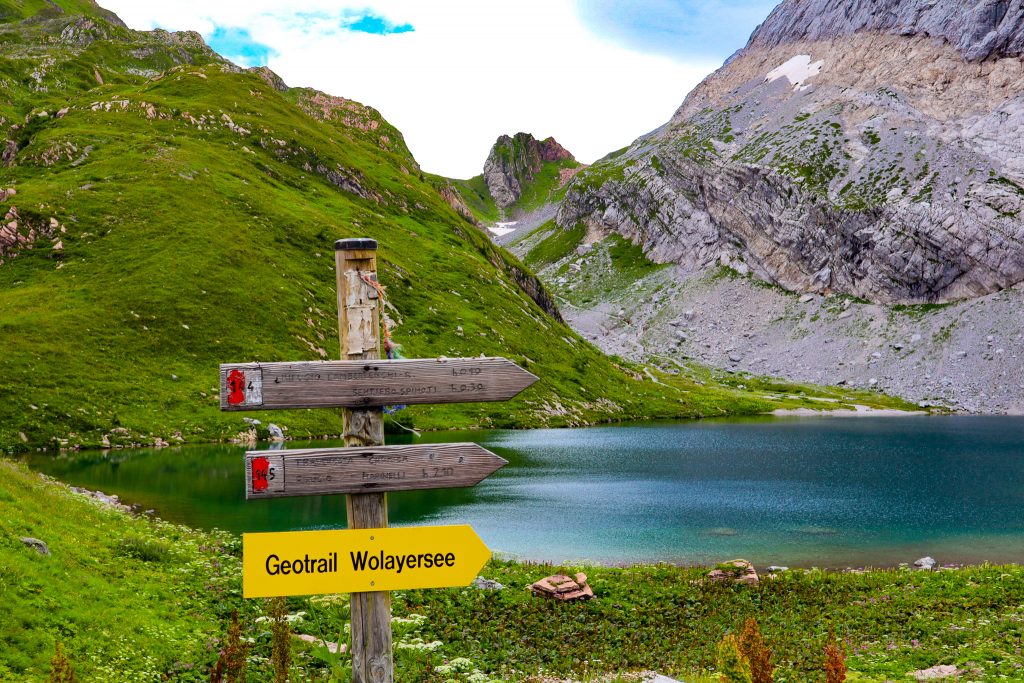
By the time we finished, every table was full. Apparently we had been very wise to get an early start as more and more hikers were filtering into the pass. We left the Wolayerseehutte behind and finished circumnavigating the lake, taking in the views from every perspective. The clouds were getting fairly dark, so we decided to return to Collina before we were drenched. It had been hard work getting up to Lago Volaia, and my pride may have been slightly hurt when I witnessed a number of young children scampering up towards the lake on our descent.
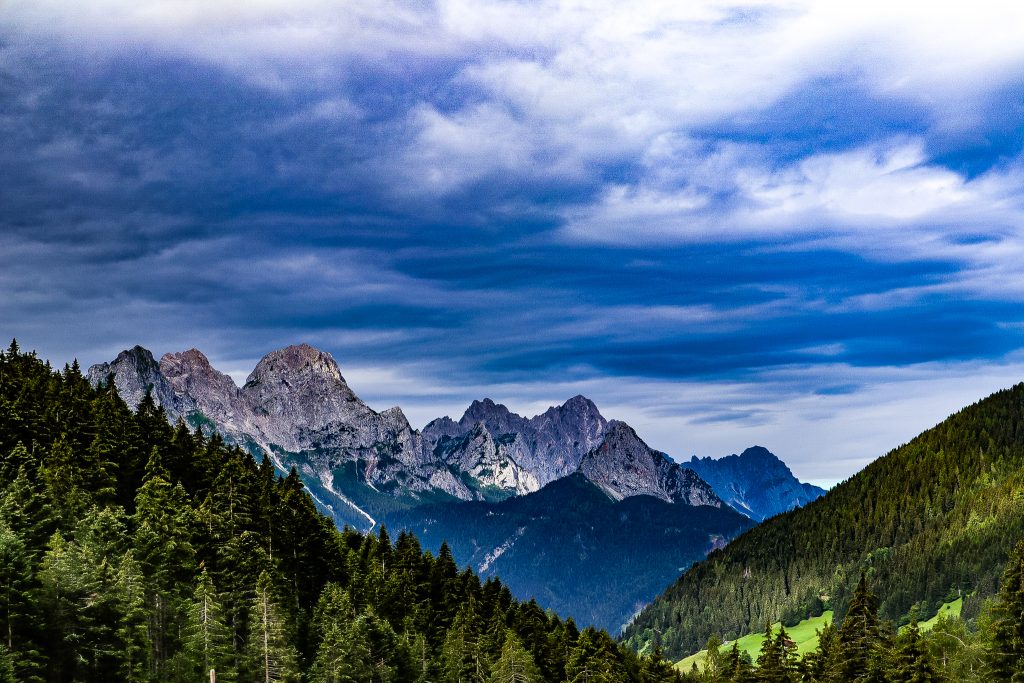
The beauty of this hike would have made it one of my all-time favorites even if it had no particular intrinsic meaning. It was truly special to walk in my great-grandfather’s footsteps and to imagine what it would have been like to journey up to that pass as a young boy, trying to make some money. He was an orphan in an impoverished region. Life was beautiful in Carnia back then, but it was certainly not easy. I’m so glad that, in the midst of such a trying childhood, he was surrounded by the kind of natural beauty that few ever get to experience.


























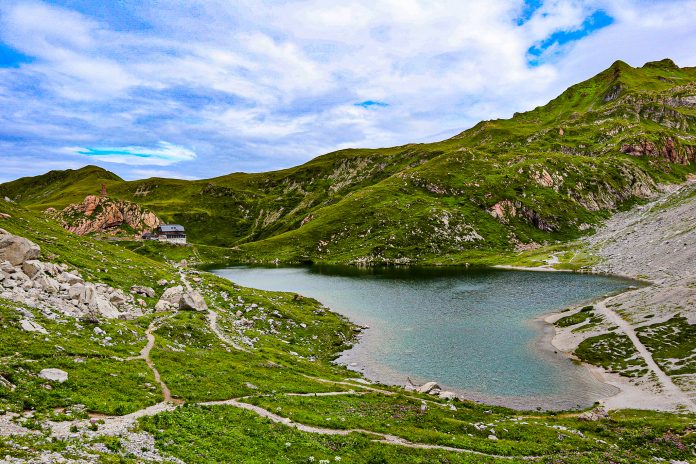




This is a very nice story well told! Thanks for writing it.
Easygoing reading, makes us joining your journey. And made me wanna go there with my family as well.